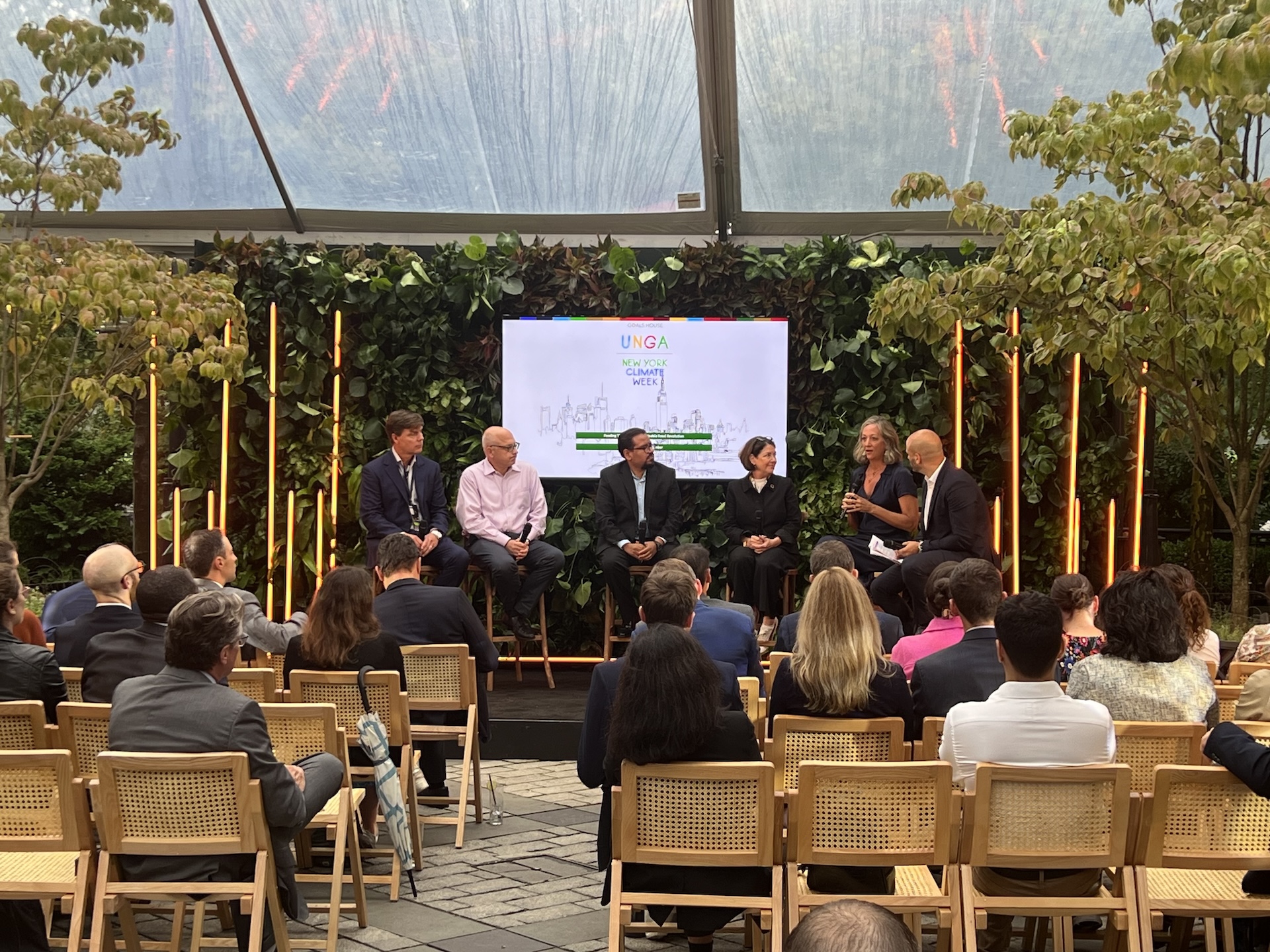In the past several years, we’ve seen a huge push for unique experiences at live events. This means more immersive environments, unique venues, upleveled content, and wow-worthy stage design.
One obvious way to transform a space and make an event experience that is totally unexpected is with an atypical stage layout. Whether it’s a thrust stage, with audience members on three sides, a runway that allows presenters to walk into the audience’s seating area, or a true theater in the round where the stage is surrounded by attendees, unusual stage layouts make an instant impression. And yet, it’s one of the few areas of live events where we aren’t seeing much change. Traditional rectangular stages are still very much the norm.
While it would be easy to assume this is for one simple reason – that it’s the way it’s always been done – there’s a long list of practical reasons behind the supremacy of the rectangular stage.
Keep reading to learn what they are.
Practicality.
A vintage “trunk” style suitcase might look cool, but it’ll only take one time lugging it through the airport to wish you hadn’t left your roller bag at home. Why? Because practicality is just as important (okay, usually more important) than flash.
Rectangular stages allow for clear sight lines, create easy entrances and exits for presenters, and provide natural spaces for technical equipment and crew members to be during the event. With a well-hidden backstage area for playback and video operators, the stage manager, production assistant, and additional crew members, equipment and event staff are tucked out of sight, keeping equipment safe, and the auditorium clear. The front of house table also has a natural place – in the back of the room – where it’s out of the way, doesn’t disrupt sight lines, and gives the event producer, show caller, A1, and lighting operator a clear view of the presenters.
Maximizing Space.
In cities like NYC (not that there are any others quite like it) space is a hot commodity, largely because it is such a limited one. And while we’re not trying to host events in the tiny studio apartments the city is infamous for, event spaces, especially unique and bespoke ones, simply aren’t enormous.
Event planners want to make sure they can comfortably fit as many attendees as possible in the space, and a rectangular stage maximizes rooms in a way that other set ups simply can’t.
If you’re planning an event and find that adding a walkway or implementing an arena style stage will limit your attendee count or venue choices, odds are you won’t do it – and we believe that’s the right call to make.
A Clear Focal Point.
A classic rectangular stage draws everybody’s eyes to the same spot – the presenter and their content.
With a rectangular stage, content is typically displayed right behind the presenter or directly on either side. However, when a stage has seating on several or all sides, you have to get creative with where you display your content so that everybody can see it. This typically means several screens, possibly above the presenter, or in different areas of the room. Either way, it means the audience’s attention will have to be pulled from the stage in order to look at the content.
A rectangular stage leads to a stage design with a clear visual focal point and keeps attendee attention where it should be.
Presenter Comfort.
Most presenters are used to having their audience right in front of them, so it’s natural for them to feel most comfortable on a traditional rectangular stage. Not to mention, it’s the easiest way to present.
Where presenting on thrust stages or in the round requires presenters to adjust their focus, move to make sure they’re facing all sides at different points during their presentations, and reference content that is likely not where they’re used to it being during a presentation, a rectangular stage gives the presenter much less to think about.
This is important as most presenters aren’t public speakers, but executives, members of the leadership team, or employees who aren’t necessarily trained on how to walk the stage effectively and engage every section of the audience. Adding an unconventional stage layout to the mix only makes it more complicated.
A rectangular stage allows presenters to move naturally and focus on what they’re presenting – not how to present.
Seating Flexibility.
A rectangular stage doesn’t mean auditorium style seating is the only option (although, it does enable the highest attendee count). Staggered seats, crescents, and tables can be used with rectangular seating just as easily as with any other stage layout, and can be a good choice for galas, awards ceremonies, or dinners.
Cons.
Rectangular stages are popular for a reason, but that doesn’t mean there aren’t any drawbacks to them, or any benefits with atypical layouts.
Some find that rectangular stages feel more formal, which can hinder audience participation. If there are mics placed around the room for Q&A, less attendees will be seated close to them, which may make them less inclined to ask a question. Attendees will likely feel like audience members, rather than participants.
Additionally, with atypical layouts, more attendees are able to sit closer to the stage. Because audiences surround the stage on more or all sides, there is more real estate closer to the presenter, which, in turn, gives the presenter more people to interact with. With a rectangular stage, the entire audience is on one side, which means the group will extend further back into the room, and more people will be seated further from the stage.
Ultimately, rectangular stages are a mainstay and the practicality, space maximization, and presenter comfort they provide continue to make them the most common and attractive option. We don’t expect them to stop being the industry standard anytime soon (or, more accurately, ever).
However, there are situations where unique layouts are beneficial for live events – and in those cases, we encourage event planners to explore unique layouts to see what impact it will have on the overall event.
If you want the practicality of a rectangular stage but want to find ways to uplevel the experience to feel more bespoke and unique, reach out to us today at WhatsUp@onewayep.com




